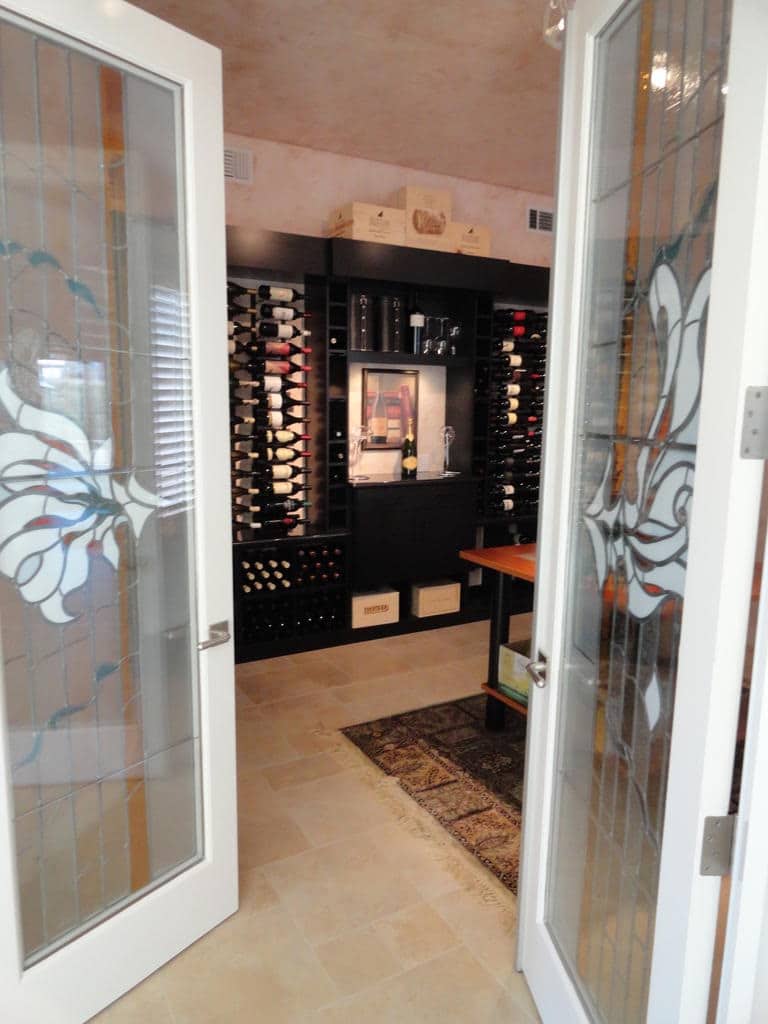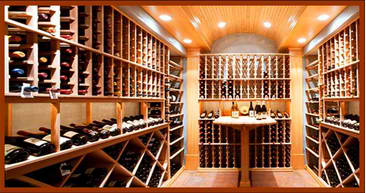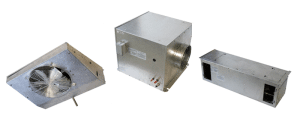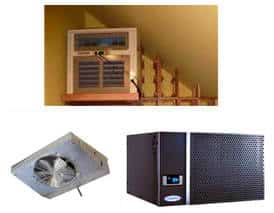Wine Cellar Cooling Units in Los Angeles, California
Contents
- 1Refrigeration Systems for Wine Cellars in California
- 2Types of Wine Cellar Cooling Units in California
- 2.11. Self-Contained Cellar Cooling Systems
- 2.22. Split Cellar Cooling Systems
- 2.2.1a. Ducted
- 2.2.2a. Ductless
- 3Main Components of a Wine Cellar Refrigeration Unit
- 3.11. Evaporator
- 3.22. Condenser
- 4Determining the Right Size of Cooling Unit Needed for Your Cellar
- 4.11. Wine Cellar Insulation
- 4.22. Ambient Temperature
- 4.33. Frequency of Opening of the Wine Cellar Door
- 4.44. Wine Cellar Lighting
- 5Wine Cellar Cooling Unit Maintenance
Wines need to be kept in a room where the ideal conditions for aging them are provided. No storage structure can ever provide the needed climate conditions for wines without the help of a cellar cooling equipment. Wine cellar refrigeration units in California come in various types. Choose the right kind of cooling system for your wine cellar, so that you wine collection is stored safe and maturing properly.
Refrigeration Systems for Wine Cellars in California
For wines to age properly, they need to be stored properly, and several conditions must be met. The most important condition is that temperature should consistently be in the ideal level. Wines are best stored at around 55 to 58 degrees Fahrenheit. Temperatures lower than this will delay the maturation of wine, while warmer temperatures can speed it up. Wines will not taste their best if they do not mature at the right pace.
Humidity is another concern when it comes to proper wine storage. For wines to be preserved correctly, the humidity inside a residential custom wine cellar should be maintained within 60 to 70 percent. Humidity that is higher than this can ruin the wine bottles labels, while humidity too low can allow the corks to dry out and shrink, which eventually causes air to get inside the bottle and ruin the flavor of the wine.
Right humidity and temperature are two values that can be provided and maintained by an efficient custom wine cellar refrigeration unit. Learn all about wine cellar cooling units by reading through this article.
Types of Wine Cellar Cooling Units in California
There are various kinds of wine cellar cooling units available in California, and they are all categorized into 2 basic types:
1. Self-Contained Cellar Cooling Systems
A self-contained wine cellar cooling unit has all the main components of a cooling system, grouped together in one container. Usually, self-contained units are installed through the wall of the cellar (the front located inside the storage room, while the rear is located outside). This type of cooling system needs adequate space and airflow for the exhausted warm air to dissipate.
Some self-contained wine cellar cooling units can be ducted, while others cannot. Units that can be ducted can only be ducted on one side: either the exhaust side or the cooling side. You may install a self-contained, through-the-wall cooling unit yourself, but those that need ducting must be installed by a licensed HVAC professional.
2. Split Cellar Cooling Systems
Basically, a split wine cellar cooling unit has the two main components of a refrigeration system, split off and placed into two separate housings. The purpose of this configuration is to separate the noisy component from the rest of the system. The noisy component is placed in an area away from the residential wine cellar. Split wine cellar refrigeration systems need to be installed by a licensed HVAC professional.
There are two types of split cooling systems in Los Angeles, California and these are:
a. Ducted
With ducted split type cooling units, there is no equipment that can be seen inside the home wine cellar. Cool air is ducted into the cellar and warm air is ducted out and into an adjacent room. Ducted split cooling systems are generally the most expensive type of wine cellar refrigeration systems
a. Ductless
Ductless split type wine cellar cooing units have a condenser that can be placed outside the wine storage room. This means that there is no need to vent out hot air into an adjacent room. In this configuration, the split system is connected through copper tubing and electrical wiring. These units are quite costly, but proven to be durable and efficient.
Main Components of a Wine Cellar Refrigeration Unit
In order for a residential custom wine cellar cooling system to function effectively, it needs two main parts, and these are:
1. Evaporator
The cooling unit’s evaporator contains the thermal expansion valve that is responsible for removing hot air from the wine cellar, through the evaporation of the liquid refrigerant.
2. Condenser
The cooling unit’s condenser contains the compressor. The compressor is responsible for changing the evaporated refrigerant into its liquid form. The compressor is also responsible for receiving the hot air from the evaporator.
Determining the Right Size of Cooling Unit Needed for Your Cellar
The size of a wine cellar cooling unit is directly related to its cooling capacity. In other words, the bigger the cooling unit, the cooler the air it can produce. Cooling capacities of refrigeration units in Los Angeles, California are rated in cubic feet. Before you determine and choose what size of cooling unit your custom wine cellar needs, there are factors that you need to consider, such as:

There are many factors to consider when choosing the right refrigeration unit for your custom wine cellar.
1. Wine Cellar Insulation
The insulation in your cellar should properly be installed. Poor insulation will cause miscalculations of the heat load of your cellar, and thus, you will be unable to determine the appropriate cooling unit. Moreover, poor insulation will cause any wine cellar cooling system to be overworked, and damaged easily.
2. Ambient Temperature
A wine cellar of the same size and design located in two different locations that have different climates will need different cooling units. The climate of the region where a cellar is built will have an impact on what cooling system your cellar needs.
3. Frequency of Opening of the Wine Cellar Door
A cooling unit will have to work harder to cool your home wine cellar if the door is frequently opened. It is important to figure out how often you enter the cellar, so that the appropriate cooling system can be determined.
4. Wine Cellar Lighting
The lighting in the custom wine cellar should not emit too much heat, or else you will need a cellar cooling unit that will need to work harder at cooling the room.
It is always wiser to consult with a professional, to properly determine the refrigeration unit that is best for your residential custom wine cellar.
Wine Cellar Cooling Unit Maintenance
Generally, wine cellar refrigeration units in California that are more costly tend to last longer than those that are less expensive. Good quality cellar cooling systems usually last 5 to 7 years. Units that are low cost usually last around 1 to 4 years.
A custom wine cellar cooling system will last long, and continue to function effectively if it is maintained properly. Before purchasing a refrigeration unit, it is important to know whether the manufacturer is local, and if you can avail of their maintenance services. Moreover, have your wine cellar refrigeration system inspected by a licensed HVAC professional every year.







